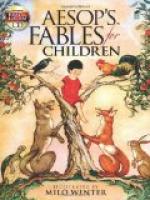|
This section contains 3,738 words (approx. 13 pages at 300 words per page) |

|
SOURCE: P. Gila Reinstein, "Aesop and Grimm: Contrast in Ethical Codes and Contemporary Values," in Children's Literature in Education, Vol. 14, No. 1, Spring, 1983, pp. 44-53.
In the following essay, Reinstein shows that Aesop's fables, which reflect a non-idealistic and self-reliant approach to human interactions, were preferred by older, married, non-white, working-class students as a tool for educating the young, but that Grimm 's fairy tales, which reflect an idealistic and self-sacrificing approach to human interactions, were preferred by young, single, white, middle-class students.
People often think of Aesop's fables and the folk tales of the brothers Grimm together, since both are collections of traditional folklore, classics of children's literature, and important sources of American popular culture. Both are retold in elementary school readers; both are regularly selected by artists for reinterpretation and reissue as picture books. Political cartoonists and advertising campaign designers take advantage of the public's familiarity with...
|
This section contains 3,738 words (approx. 13 pages at 300 words per page) |

|


